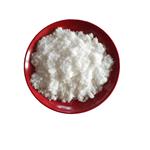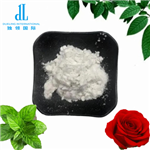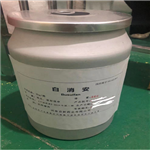- Busulfan
-

- $0.00 / 25KG
-
2023-07-01
- CAS:55-98-1
- Min. Order: 1KG
- Purity: 99%
- Supply Ability: 50000KG/month
- Busulfan
-

- $1.00 / 1kg
-
2022-11-25
- CAS:55-98-1
- Min. Order: 1kg
- Purity: 99%
- Supply Ability: 300MT/month
- Busulfan
-

- $0.00 / 5Kg/Drum
-
2021-11-20
- CAS:55-98-1
- Min. Order: 10Kg/Drum
- Purity: 99%
- Supply Ability: 5
Related articles - Uses of Busulfan
- Busulfan was noted to have strong antitumor activity in the 1950s. Because of this, GlaxoSmithKline developed the compound, la....
- Nov 30,2021
|
| | Busulfan Basic information |
| | Busulfan Chemical Properties |
| Melting point | 114-117 °C(lit.) | | Boiling point | 359.3°C (rough estimate) | | density | 1.305 (estimate) | | refractive index | 1.5630 (estimate) | | Fp | 9℃ | | storage temp. | Inert atmosphere,Room Temperature | | solubility | Very slightly soluble in water, freely soluble in acetone and in acetonitrile, very slightly soluble in ethanol (96 per cent). | | form | Crystalline Powder | | color | Pale Brown | | Water Solubility | Decomposes | | Merck | 14,1505 | | BRN | 1791786 | | Stability: | Moisture Sensitive | | CAS DataBase Reference | 55-98-1(CAS DataBase Reference) | | IARC | 1 (Vol. 4, Sup 7, 100A) 2012 | | EPA Substance Registry System | Busulfan (55-98-1) |
| | Busulfan Usage And Synthesis |
| Description | Chemically, busulfan is classified as an alkyl sulfonate. One or both of the methylsulfonate ester moieties can be displaced by the nucleophilic N7 of guanine, leading to monoalkylated and cross-linked DNA. The extent of alkyl sulfonate–mediated DNA interstrand cross-linking has been shown to vary with the length of the alkyl chain between sulfonate esters, with the tetramethylene-containing busulfan showing less interstrand cross-linking capability than hexamethylene, methylene, or octamethylene analogues. Intrastrand cross-linking also occurs, preferentially at 5′-GA-3′ but also at 5′-GG-3′ sequences. Alkylation of Cys sulfhydryl groups is yet another mechanism of cytotoxicity. | | Chemical Properties | White Crystalline Solid | | Originator | Myleran,Burroughs-
Wellcome,US,1954 | | Uses | Alkylating agent with antileukemic activity. Antineoplastic | | Uses | Busulfan USP (Myleran) is used to treat Chronic granulocytic leukemia; other myeloproliferative disorders. | | Uses | Antineoplastic alkylating agent, the palliative
treatment of chronic myeloid leukemia, and insect
sterilant. | | Definition | ChEBI: A methanesulfonate ester that is butane-1,4-diol in which the hydrogens of the hydroxy groups are replaced by methanesulfonyl groups. An alkylating antineoplastic agent, it is used for the treatment of chronic myeloid leukemia (although it has been largely
replaced by newer drugs). It is also used as an insect sterilant. | | Indications | Busulfan (Myleran) is a bifunctional methanesulfonic
ester that forms intrastrand cross-linkages with DNA.
The drug is well absorbed after oral administration and
has a plasma half-life of less than 5 minutes. Metabolites
and degradation products are excreted primarily in the
urine.
Busulfan is used in the palliative treatment of
chronic granulocytic leukemia. Daily oral therapy results
in decreased peripheral white blood cells and improved
symptoms in almost all patients during the
chronic phase of the disease. Excessive uric acid production
from rapid tumor cell lysis should be prevented
by coadministration of allopurinol.
At usual therapeutic dosages, busulfan is selectively
toxic to granulocyte precursors rather than lymphocytes.
Thrombocytopenia and anemia and less commonly,
nausea, alopecia, mucositis, and sterility also may
occur. Unusual side effects of busulfan include gynecomastia,
a general increase in skin pigmentation, and interstitial
pulmonary fibrosis. | | Manufacturing Process | 3.6 grams of redistilled 1,4-butanediol were dissolved in 10 ml of pyridine and
the solution was cooled in ice and water. 9.6 grams of redistilled methanesulfonyl-
chloride were added dropwise at such a rate that the temperature did
not rise above 20°C. The solution was then allowed to stand at room
temperature to; 30 minutes, during which time the temperature rose to 60°C.
A thick precipitate of pyridine hydrochloride was formed.
The mass was cooled in ice water and was treated with 30 ml of ice cold
water. On agitation, a white crystalline precipitate was formed. This was
filtered off and washed well with ice cold water and allowed to drain on the
pump. It weighed 7.8 grams and had a melting point of 100°C. 3.5 grams of
the material were recrystallized from acetone and ether to give small white
needles, having a melting point of 106°-107°C, unchanged by further
recrystallization. | | Brand name | Myleran (GlaxoSmithKline). | | Therapeutic Function | Antineoplastic | | General Description | White crystals or powder. | | General Description | Busulfan is available as 2-mg tablets for oral administrationand 10-mL vials for IV administration in the treatment ofchronic myelogenous leukemia (CML) and in high-dosetherapy for refractory leukemia with bone marrow transplant.The agent is well absorbed when given orally, well distributedinto tissues, and crosses the blood-brain barrier.Metabolism occurs in the liver to give mainly methane sulfonic acid by the action of glutathione-S-transferase. Other identified metabolites in humanshave included tetrahydrothiophene-1-oxide, sulfalene,primarily in the urine, and the terminal elimination half-lifeis 2.5 hours. Adverse effects include dose-limiting myelosuppression;nausea and vomiting that occur commonly butare generally mild; and pulmonary symptoms including interstitialpulmonary fibrosis, which is referred to as “busulfanlung,” occurs belatedly (1–10 years posttreatment) andalthough rare, it is severe. Other adverse effects includemucositis, skin rash, impotence, amenorrhea, infertility, hepatoxicity,insomnia, anxiety, and an increased risk of secondarymalignancies. At normal doses, the agent is welltolerated except for the myelosuppression that occurs. Thishas allowed for high-dose therapy with the agent when accompaniedby bone marrow transplant to counter the myelosuppressiveeffects. | | General Description | As an alternative to utilizing aziridines as electrophilic species,it was found that simply utilizing a carbon chain terminated atboth ends by leaving groups gave compounds capable of actingas cross-linking agents.Busulfan utilizestwo sulfonate functionalities as leaving groups separated by afour-carbon chain that reacts with DNA to primarily form intrastrandcross-link at 5'-GA-3' sequences.The sulfonatesare also subject to displacement by the sulfhydryl functionsfound in cysteine and glutathione, and metabolic products areformed as a result of nucleophilic attack by these groups togenerate sulfonium species along with methane sulfonicacid.This is followed by conversion to tetrahydrothiophene,and further oxidation products are subsequently produced togive the sulfoxide and sulfone. The cyclic sulfone known assulfolane may be further oxidized to give 3-hydroxysulfolane. | | Air & Water Reactions | Busulfan is an alkylating agent which hydrolyzes in water. . | | Reactivity Profile | Busulfan is an alkylating agent which hydrolyzes in water. . Strong reducers may yield hydrogen sulfide. | | Hazard | Extremely toxic, carcinogen, clastogenic,
teratogenic, immunosuppressive, delayed bone
marrow aplasia, cataracts, pigmentation, pulmonary
thrombosis, cardiotoxic effects, thrombocytopenia. | | Fire Hazard | Flash point data for Busulfan are not available. Busulfan is probably combustible. | | Clinical Use | Busulfan is used in the treatment of chronic myelogenous leukemia and can be administered either orally or by IV infusion. | | Side effects | Serious bone marrow hypoplasia and myelosuppression are possible with this agent, and recovery from busulfan�induced pancytopenia can take up to 2 years. | | Safety Profile | Confirmed carcinogen
producing leukemia, kidney, and uterine
tumors. Experimental neoplastigenic and
tumorigenic data. Poison by ingestion,
subcutaneous, intraperitoneal, intravenous,
and possibly other routes. Ingestion by
pregnant women can cause cancer of the
reproductive system of the fetus includtng
the uterus. Human teratogenic effects by
ingestion and possibly other routes include
developmental abnormaltties of the eye, ear,
craniofacial area including the nose and
tongue, gastrointestinal system, endocrine
system, urogenital system, and other
unspecified areas. Other human
reproductive effects by ingestion and
possibly other routes include: impotence,
changes in the uterus, cervix, and vagina,
and menstrual-cycle dtsorders. Experimental
reproductive effects. Human systemic
effects by ingestion: general arteriolar or
venous ddation of the eye, changes in
structure or function of salivary glands.
When heated to decomposition it emits
toxic fumes of SOx. See also
SULFONATES. | | Synthesis | Busulfan, 1,4-butandioldimethansulfonate (30.2.3.1), is made by reacting
butandiol with methanesulfonyl chloride. 
| | Potential Exposure | Those involved in the manufacture,formulation, or use of this compound which finds application as an insect sterilant, and as a chemotherapeutic agenttaken orally to treat some kinds of leukemia. | | Veterinary Drugs and Treatments | Busulfan may be useful in the adjunctive therapy of chronic granulocytic
leukemias or polycythemia vera in small animals. Not commonly
used in veterinary medicine. | | Drug interactions | Potentially hazardous interactions with other drugs
Antibacterials: concentration increased by
metronidazole.
Antipsychotics: avoid with clozapine, increased risk
of agranulocytosis.
Antifungals: metabolism inhibited by itraconazole,
monitor for signs of busulfan toxicity. | | First aid | If this chemical gets into the eyes, remove anycontact lenses at once and irrigate immediately with wateror normal saline for 20� 30 min, occasionally lifting upperand lower lids. Seek medical attention immediately. If thischemical contacts the skin, remove contaminated clothingand wash immediately with soap and water. Seek medicalattention immediately. If this chemical has been inhaled,remove from exposure, begin rescue breathing (using universal precautions, including resuscitation mask) if breathing has stopped and CPR if heart action has stopped.Transfer promptly to a medical facility. When this chemicalhas been swallowed, get medical attention. Give large quantities of water and induce vomiting. Do not make an unconscious person vomit. | | Carcinogenicity | 1,4-Butanediol dimethanesulfonate is known to be a human carcinogen based on sufficient evidence of carcinogenicity from studies in
humans. | | Metabolism | Busulfan is extensively metabolised in the liver, mainly
by conjugation with glutathione, either spontaneously or
mediated by the enzyme glutathione-S-transferase. About
12 inactive metabolites have been identified, which are
excreted in the urine. About 1% of busulfan is excreted
unchanged. Elimination in the faeces is considered to be
negligible. | | storage | Color Code—Blue: Health Hazard/Poison: Storein a secure poison location. Store in a refrigerator and protect from exposure to oxidizers or moisture. A regulated,marked area should be established where this chemical is handled, used, or stored in compliance with OSHAStandard 1910.1045. | | Shipping | The label requirement for medicine, solid, toxic,n.o.s. is “POISONOUS/TOXIC MATERIALS.” Medicine,solid, toxic, n.o.s., fall in Hazard Class 6.1 and busulfanfalls in Packing Group II. | | Incompatibilities | Oxidizers, moist air, and water. | | references | [1]. probin v, wang y, zhou d. busulfan-induced senescence is dependent on ros production upstream of the mapk pathway. free radic biol med, 2007, 42(12): 1858-1865.
[2]. probin v, wang y, bai a, et al. busulfan selectively induces cellular senescence but not apoptosis in wi38 fibroblasts via a p53-independent but extracellular signal-regulated kinase-p38 mitogen-activated protein kinase-dependent mechanism. j pharmacol exp ther, 2006, 319(2): 551-560.
[3]. choi yj, ok dw, kwon dn, et al. murine male germ cell apoptosis induced by busulfan treatment correlates with loss of c-kit-expression in a fas/fasl- and p53-independent manner. febs lett, 2004, 575(1-3): 41-51. |
| | Busulfan Preparation Products And Raw materials |
|